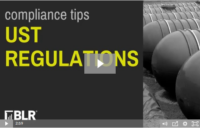June 1, 2016, is the final deadline in the 4-year phase-in period for OSHA’s 2012 revisions to the hazard communication standard that aligned with the Globally Harmonized System for the Classification and Labelling of Chemicals, or GHS. Check out the infographic for an overview of what the final deadline requires and tips to make sure […]
Job hazard analysis is an essential component of a successful safety program. This BLR infographic details the 6 steps of a JHA so you can assess the hazards at your facility and implement corrective actions. Conducting an Effective Job Hazard Analysis by Safety.BLR.com Read more.
by Tim Fagan The Tier II reporting deadline is approaching. This infographic provides essential information to help you determine if you need to report, along with some helpful tips for preparing and submitting a Tier II report.
Does your facility need to file a Hazardous Waste Biennial Report? This infographic helps you decide and provides useful tips for preparing and submitting a Biennial Report.
Workplace violence is the second leading cause of occupational fatalities in the United States. Are you doing your part to keep your workers safe? Check out the infographic to learn who’s at risk for workplace violence and how to prevent incidents at your company. Workplace Violence: It Can Happen Anywhere. Are you prepared? by Safety.BLR.com
In this video, BLR Legal Editor Emily Remmel, JD, offers a concise overview of the updated underground storage tank (UST) regulations.
This safety infographic shows you how to conduct a job hazard analysis (JHA) in six steps. You’ll learn about factors to consider when selecting job and work activities, how to develop corrective measures, tips on proper documentation, and more.
Some SPCC-regulated facilities require an additional contingency plan. Federal guidelines have been established for minimum criteria for the development and implementation of state, local, and regional contingency plans. The plans are developed by state and local governments in consultation with private interests in order to ensure timely, efficient, coordinated, and effective action to minimize damage […]
Those facilities that meet the definition of a “qualified facility” may self-certify their SPCC plan and amendments rather than use a professional engineer (PE). Determinations about environmental equivalence and impracticality still require a PE certification even at qualified facilities, if they are included in the SPCC plan.
BLR recently partnered with ProntoForms to survey 500+ safety pros to see if technology can make safety simpler and more effective. This new infographic offers insight into the results. (Note: You can download survey results here.)





